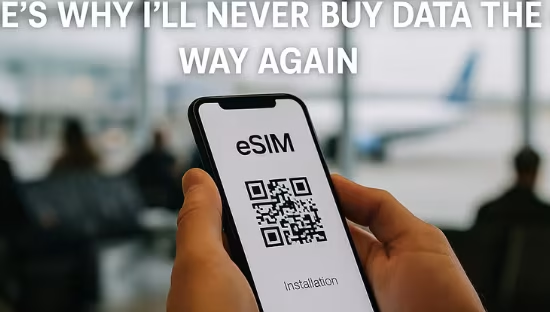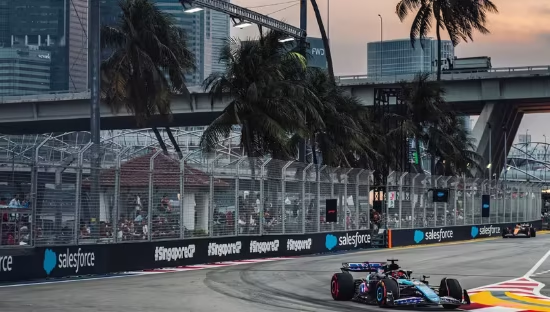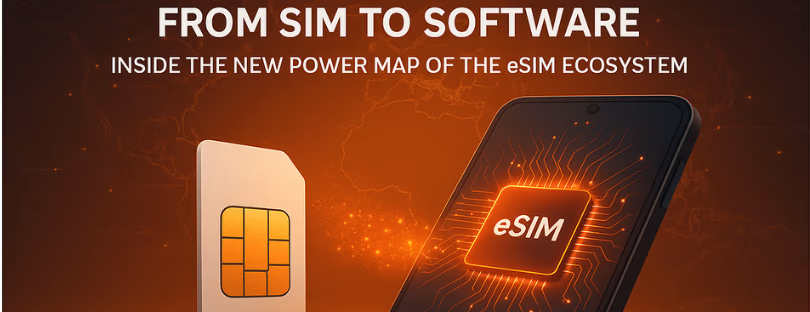
Your 5G Logo Abroad Means Nothing — And Carriers Know It
You’ve probably been there: you land in a new country, switch off airplane mode, and your phone proudly flashes that shiny 5G logo in the corner. For a split second, you think: Wow, I’m all set for blazing speeds abroad. But then reality hits. Pages load sluggishly, videos buffer, and that promise of “next-gen connectivity” feels more like early 2010s 3G.
Here’s the uncomfortable truth most carriers don’t say out loud: that 5G logo you see abroad means almost nothing. It’s marketing theater, a feel-good illusion, while the actual speeds and experience you get are often nowhere near what you’re paying for back home. And the carriers know this.
Let’s peel back the curtain.
5G at Home vs. 5G Abroad: Two Different Worlds
When your home carrier brags about lightning-fast 5G, they’re usually talking about domestic networks they actually control. They’ve invested billions in spectrum licenses, tower infrastructure, and antennas. They want you dazzled by speed tests showing gigabit downloads and low latency gaming.
But once you step outside your country? The rules change.
Your carrier no longer has its own towers. Instead, you’re at the mercy of roaming agreements—handshakes between your home operator and foreign networks. And here’s the kicker: those agreements rarely give you the full-fat, premium access to 5G.
Instead, what you often get is:
- Downgraded to 4G or even 3G in some regions.
- Artificial speed caps are buried in the fine print.
- Prioritized local customers while roamers get whatever’s left.
So while your phone proudly screams “5G,” the actual performance might feel worse than your 4G at home.
Why Carriers Sell the Illusion
Carriers know most people won’t run speed tests the minute they land in Madrid or Singapore. They also know that network logos are more about psychology than reality. Seeing “5G” reassures you that you’re getting the newest and the best. It’s a comfort blanket—proof, supposedly, that the expensive roaming plan you bought is worth it.
But if they were transparent—if your phone suddenly displayed “4G” or “3G” in half the countries you visit—you’d feel cheated. So instead, the system lets that 5G logo linger, even if the connection is throttled to mid-tier speeds.
It’s like being served instant coffee in a fancy café cup. The branding makes you feel better, but the taste tells another story.
The Fine Print Nobody Reads
If you dig into the small print of your roaming plan (and honestly, who does this before boarding a flight?), you’ll usually find clever disclaimers like:
- “Access to 5G abroad depends on partner networks.”
- “Actual speeds may vary and are not guaranteed.”
- “Some services may be delivered on 4G/LTE.”
Translation? We’ll show you the 5G logo, but don’t expect 5G performance.
It’s the perfect scam—legal, technically correct, yet designed to mislead. You think you’re buying premium connectivity, but you’re really buying the appearance of it.
Local Networks Protect Their Own
Another factor: foreign networks don’t see you as their priority. To them, you’re just a temporary guest piggybacking through a roaming deal. Their loyalty is to their own subscribers, the people paying them directly every month.
So if the network gets busy—say, during rush hour in Tokyo or at a concert in Berlin—guess who gets squeezed out first? The roamer. You might still see “5G,” but your data flows at the speed of molasses while locals stream UHD video without a hiccup.
Real-Life Roaming Letdowns
Talk to frequent travelers and you’ll hear the same frustrations:
- The Business Traveler in Paris: Paid extra for a global 5G pass, only to find video calls constantly freezing during client meetings. “It felt like 2015 again,” he said.
- The Backpacker in Thailand: Phone displayed 5G the whole trip, but maps loaded so slowly she thought her phone was broken.
- The Remote Worker in Mexico City: Needed fast tethering for work. Instead got capped speeds that couldn’t even handle large file uploads.
The common thread? The illusion of 5G, the reality of something else. roaming 5g speeds
Carriers Know You Won’t Complain
Why don’t carriers fix this? Simple: most people don’t complain loudly enough. When you’re traveling, you’ve got other priorities—navigating airports, finding your hotel, eating tacos in the sun. Connectivity frustrations are just shrugged off as “the way it is abroad.”
Carriers count on that apathy. They know you won’t call customer support from Rome or Bangkok to argue about megabits per second. And when you get home, you’re too busy catching up on life to fight about a few gigabytes of roaming data.
In other words, they bank on your silence.
The Bigger Picture: 5G as a Marketing Mirage
This isn’t just a roaming issue. It’s part of a broader truth about 5G. Since its flashy launch, 5G has been more of a marketing buzzword than a consistent user experience. Yes, in controlled conditions, it’s incredibly fast. But for most people, most of the time, the difference between 5G and good 4G is marginal at best.
Now add the complexity of roaming, and it becomes clear: carriers are selling the dream of futuristic speeds abroad while quietly delivering something far more ordinary.
So What Can You Do?
If you’re tired of being fooled by the roaming 5G mirage, here are a few ways to reclaim control:
- Consider an eSIM or local SIM.
Buying local data is often cheaper and gives you real access to the local network, not throttled “roamer leftovers.” - Don’t believe the logo.
Run a quick speed test when you land. It takes 30 seconds and tells you the truth your carrier won’t. - Check travel forums.
Other travelers often share which carriers or eSIM providers actually deliver usable speeds in different countries. - Push back.
Even if it feels futile, complain when you’re misled. If enough people speak up, carriers will feel pressure to improve transparency.
The Bottom Line about
That little 5G icon on your screen abroad is more about branding than reality. It’s a digital placebo—designed to reassure you, not to reflect your actual experience. Carriers know it, they design around it, and they profit from it.
But once you understand the game, you can stop being dazzled by the logo and start demanding what really matters: reliable, transparent, and fairly priced connectivity wherever you travel.
Because at the end of the day, it doesn’t matter if your screen says 5G, 4G, or something else entirely. What matters is whether you can video call your family, upload your work files, or just get your maps to load when you’re lost in a new city.
And right now? The carriers aren’t delivering on that promise.
- AIRALO
-
eSIM for
Europe
39 countries
-
1 GB – 7 days – €4.27
3 GB – 30 days – €11.09
10 GB – 30 days – €31.57
- AIRHUB
-
eSIM for
Europe
34 countries
-
1 GB – 7 days – €2.99
3 GB – 30 days – €5.12
10 GB – 30 days – €11-09
- aloSIM
-
eSIM for
Europe
32 countries
-
1 GB – 7 days – €5.00
3 GB – 30 days – €13.00
10 GB – 30 days- €36.00
- GigSky
-
eSIM for
Europe
36 countries
-
1 GB – 7 days – €6.99
3 GB – 15 days – €11.19
10 GB – 30 days – €27.99
- iRoamly
-
eSIM for
Europe
39 countries
-
1 GB – 7 day – €6.83
3 GB – 15 days – €10.24
10 GB – 30 days – €18.77
- Maya Mobile
-
eSIM for
Europe
34 countries
-
1 GB – 7 days – –
5 GB – 15 days – €5.99
10 GB – 30 days- €13.99
- NOMAD
-
eSIM for
Europe
36 countries
-
1 GB – 7 days – €4.71
3 GB – 15 days – €10.27
10 GB – 30 days – €15.41
- UBIGI
-
eSIM for
Europe
29 countries
-
500 MB – 1 day – €2.00
3 GB – 30 days – €8.00
10 GB – 30 days – €19.00
- VOIA
-
eSIM for
Europe
34 countries
-
1 GB – 7 days – €2.69
3 GB – 15 days – €5.05
10 GB – 30 days- €11.70
The Best eSIM Finder brings together 100+ providers in one place, giving you a clear view of everything from data limits and business options to tethering, crypto payments, coverage, travel extras, refund policies, discounts, and reviews—so you don’t just compare plans, you understand which one truly fits your needs. Start exploring today and find the plan that fits you best.



















